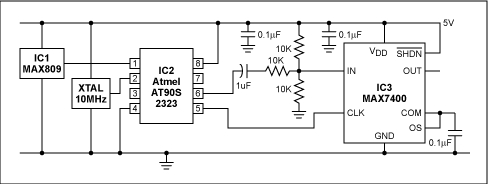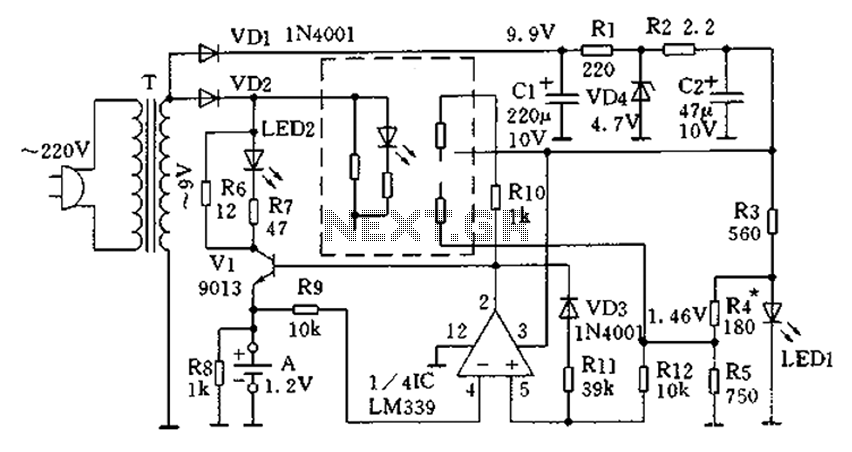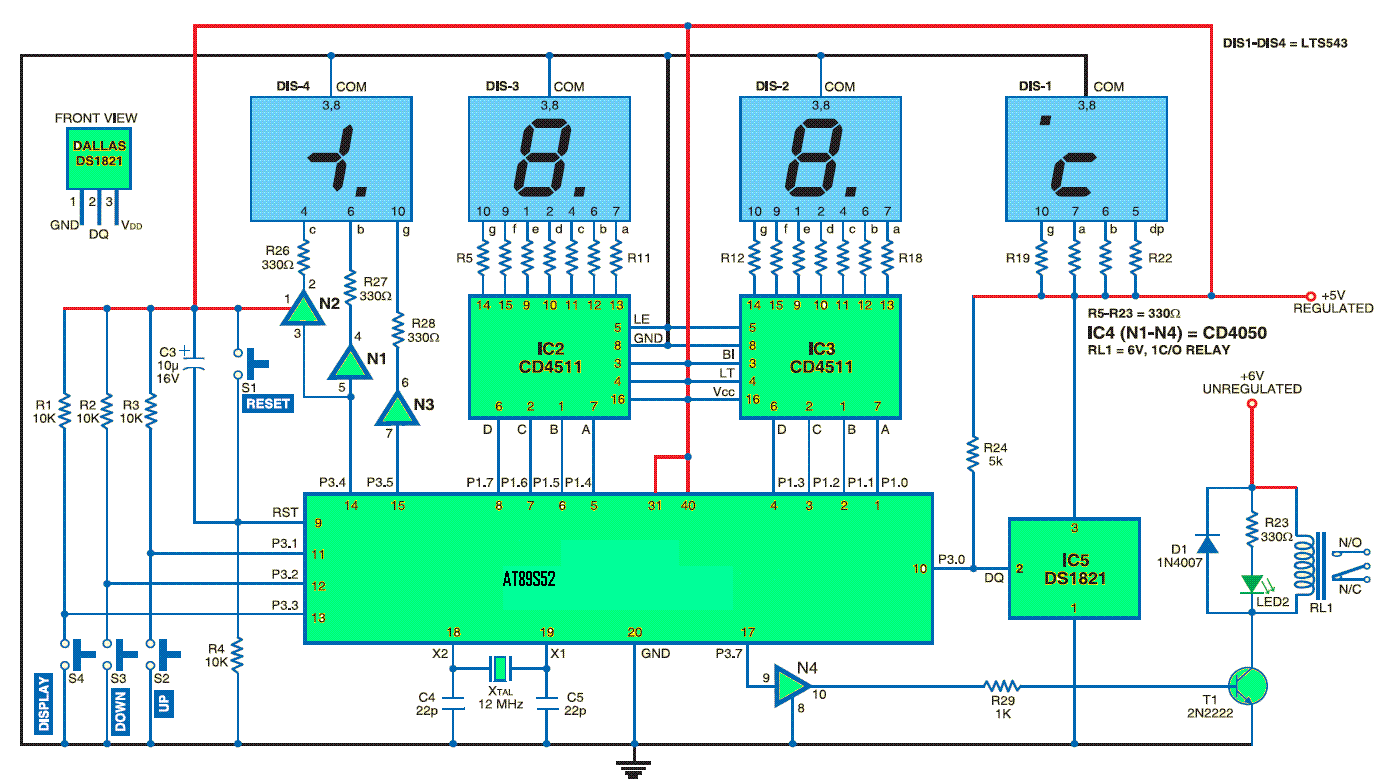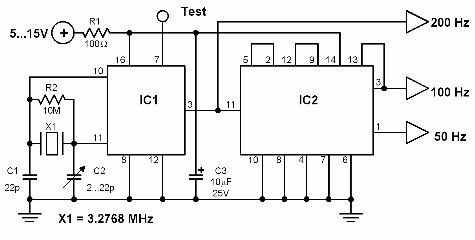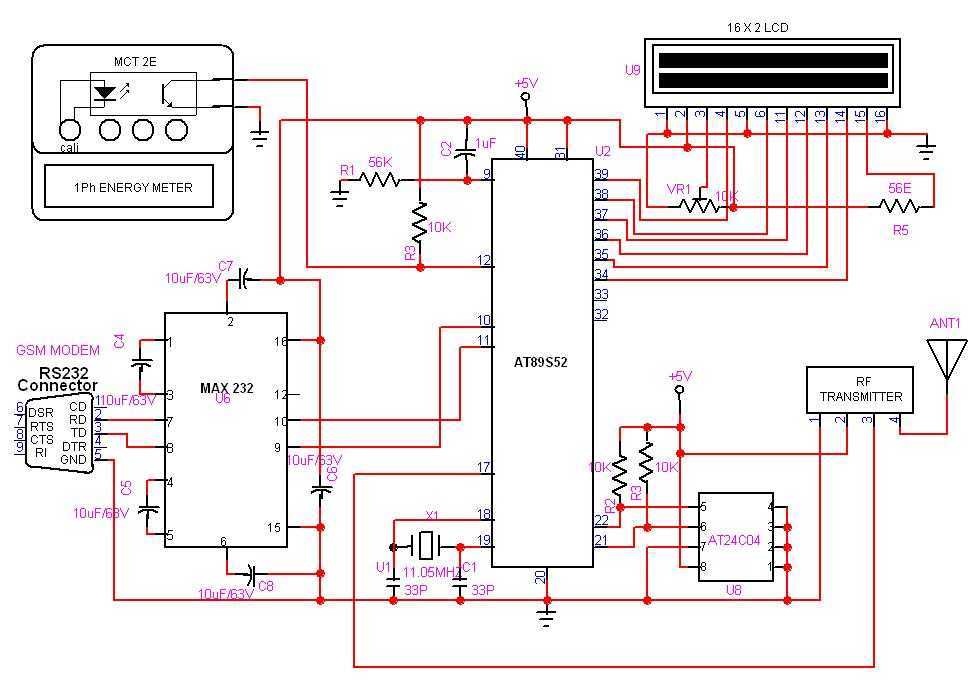
Automatic lighting control telephone signals
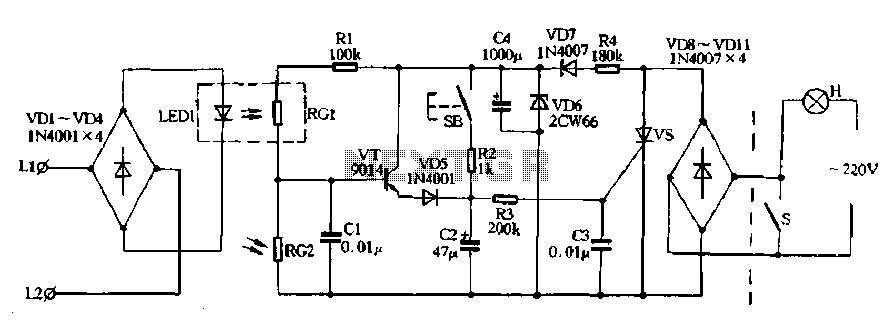
Diodes VD8 to VDI1 function as part of the main circuit isolation, with SCR serving as a composition control switch. The buck regulator circuit is composed of a stable orbital tube VD6 and a simple resistor-capacitor combination (C4). The circuit provides an output DC voltage of approximately 24V for power control. An optocoupler is formed by sensitive electrical resistors and light-emitting diode LED1, while photoresistor RG2 and diode VT are integrated into a phone light control circuit. Inductors L1 and L2 are connected in series with the telephone line. When there is no call between L1 and L2, no current flows through LED1, resulting in no light emission. Consequently, photoresistor RG1 exhibits high resistance, leading to the cutoff of transistor VT and turning off the controllable silicon (SCR), which keeps lamp H off. At this stage, the entire circuit is in a quiescent state, consuming minimal power (less than 1 mA), effectively rendering it energy-efficient. When a telephone call is initiated or the handset is lifted, current flows between L1 and L2, illuminating LED1. The light from LED1 causes photoresistor RG1 to show low resistance. During the day, RG2 is also exposed to natural light, causing it to exhibit low resistance, which does not generate sufficient voltage to turn on VT. Thus, even with a phone call, the lights remain off during the day. At night, RG2 shows high resistance, allowing for a higher voltage across the circuit, which turns on transistor VT. Capacitor C4 charges through VT, while diode VD5 allows rapid charging of capacitor C2 to about 20V, establishing a balanced voltage across the circuit. Simultaneously, C4 charges through resistor R3, triggering the SCR gate, which activates and lights lamp H. After the call ends, when no current flows between L1 and L2, transistor VT turns off. However, the charge stored in C2 continues to supply current to the SCR gate via R3, keeping the SCR in the on state, thus allowing the lamp to remain illuminated. Eventually, as C2 discharges and loses the trigger current, the SCR turns off at the AC zero crossing, extinguishing the light.
The circuit described is a sophisticated implementation of a telephone light control system that integrates various components to achieve efficient operation. The use of diodes for isolation ensures that the control circuit remains unaffected by the main power line fluctuations. The buck regulator design, utilizing a stable orbital tube and RC components, facilitates a reliable DC output for the power control needs of the system.
The optocoupler configuration, utilizing LED1 and RG1, serves as an effective means of isolating the control logic from the high-voltage telephone line, ensuring safety and integrity of the components. The interaction between the light-emitting diode and the photoresistor plays a crucial role in determining the operational state of the circuit based on ambient light conditions, enhancing energy efficiency by preventing unnecessary power consumption during daylight.
The operational dynamics of the circuit are particularly noteworthy; the design ensures that the lamp remains off during the day while still being responsive to incoming calls. The charging and discharging behavior of capacitors C2 and C4, along with the SCR's control mechanism, allows for a delay in turning off the lamp after the call has ended, providing a visual indication that the phone was in use. This feature is particularly useful in scenarios where visibility is essential, such as in dimly lit environments.
Overall, the circuit is an exemplary model of integrating various electronic components to create a functional, energy-efficient light control system that responds intelligently to user interactions and environmental conditions.Diodes VD8 ~ VDI1, SCR vs composition control switch main circuit isolation diode VD7, stable orbital tube VD6, simple resistor capacitor C4 constitute buck regulator circuit, the output DC voltage of about 24V for power control circuit. Sensitive electrical resistors and light-emitting diodes LED1 RGl constitute an optocoupler, it photoresistor RG2 and i diode VT group into a phone, light control circuit. Ll, L2 side in series with the telephone line, usually when no call between L1, L2 no current flows through the light emitting diode LED] no light, so photoresistor RGI exhibit a high resistance, the transistor VT cutoff, controllable silicon vs also turned off, the lamp H does not shine.
At this time the entire circuit in a quiescent state, power consumption is minimal, less than found by ImA, can be considered not consume energy. When a telephone call is scored or off-hook dialing, between Ll, L2 current flows, the current telephone signal light-emitting diodes LED1 light, its light shines it presents a low resistance on the photosensitive resistor RGI.
If during the day, because by the treasury within RG2 natural light irradiation also showed low resistance, it (RGl + RI) partial pressure of lower voltage generated thereon, not enough to make VT conduction, so during the day, although the phone, lights not light. Only at night, RG2 showed high resistance, the above share a high voltage, so the transistor VT conduction, C4 charge stored on the adoption of VT, VD5 rapid charge to C2, C2 charged to about 20V so that the left and right voltage.
At the same time, C4 through the R3 vs SCR gate, between the cathode Yan electricity, so vs Xun said opening, electric lamp H lights up. Hang up after the call is finished, between L1, L2 no current flows through the transistor vT restore off, but the offer by R3 can continue to store charge in C2 vs gate current, so vs remain open state, L-what point lights remain bright light.
Be C2 discharge end, vs loss of trigger current, ie when the AC zero crossing Tuen off, lights off.
The circuit described is a sophisticated implementation of a telephone light control system that integrates various components to achieve efficient operation. The use of diodes for isolation ensures that the control circuit remains unaffected by the main power line fluctuations. The buck regulator design, utilizing a stable orbital tube and RC components, facilitates a reliable DC output for the power control needs of the system.
The optocoupler configuration, utilizing LED1 and RG1, serves as an effective means of isolating the control logic from the high-voltage telephone line, ensuring safety and integrity of the components. The interaction between the light-emitting diode and the photoresistor plays a crucial role in determining the operational state of the circuit based on ambient light conditions, enhancing energy efficiency by preventing unnecessary power consumption during daylight.
The operational dynamics of the circuit are particularly noteworthy; the design ensures that the lamp remains off during the day while still being responsive to incoming calls. The charging and discharging behavior of capacitors C2 and C4, along with the SCR's control mechanism, allows for a delay in turning off the lamp after the call has ended, providing a visual indication that the phone was in use. This feature is particularly useful in scenarios where visibility is essential, such as in dimly lit environments.
Overall, the circuit is an exemplary model of integrating various electronic components to create a functional, energy-efficient light control system that responds intelligently to user interactions and environmental conditions.Diodes VD8 ~ VDI1, SCR vs composition control switch main circuit isolation diode VD7, stable orbital tube VD6, simple resistor capacitor C4 constitute buck regulator circuit, the output DC voltage of about 24V for power control circuit. Sensitive electrical resistors and light-emitting diodes LED1 RGl constitute an optocoupler, it photoresistor RG2 and i diode VT group into a phone, light control circuit. Ll, L2 side in series with the telephone line, usually when no call between L1, L2 no current flows through the light emitting diode LED] no light, so photoresistor RGI exhibit a high resistance, the transistor VT cutoff, controllable silicon vs also turned off, the lamp H does not shine.
At this time the entire circuit in a quiescent state, power consumption is minimal, less than found by ImA, can be considered not consume energy. When a telephone call is scored or off-hook dialing, between Ll, L2 current flows, the current telephone signal light-emitting diodes LED1 light, its light shines it presents a low resistance on the photosensitive resistor RGI.
If during the day, because by the treasury within RG2 natural light irradiation also showed low resistance, it (RGl + RI) partial pressure of lower voltage generated thereon, not enough to make VT conduction, so during the day, although the phone, lights not light. Only at night, RG2 showed high resistance, the above share a high voltage, so the transistor VT conduction, C4 charge stored on the adoption of VT, VD5 rapid charge to C2, C2 charged to about 20V so that the left and right voltage.
At the same time, C4 through the R3 vs SCR gate, between the cathode Yan electricity, so vs Xun said opening, electric lamp H lights up. Hang up after the call is finished, between L1, L2 no current flows through the transistor vT restore off, but the offer by R3 can continue to store charge in C2 vs gate current, so vs remain open state, L-what point lights remain bright light.
Be C2 discharge end, vs loss of trigger current, ie when the AC zero crossing Tuen off, lights off.
